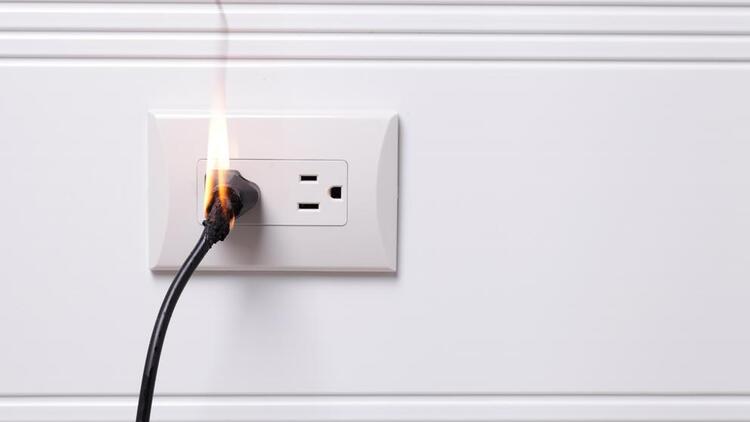
Home electrical fires claim lives every year. Most are caused by incorrectly installed wiring or overloaded circuits or extension cords. In other words, most electrical fires are preventable.
Fire deaths are highest in the winter months as people spend more time indoors, increasing lighting, heating and appliance use. For example, supplemental heaters pull the same 1,500 watts of electricity as a hair dryer, and are often used for longer.
The deadliest house fires begin in main living areas. Common culprits include heaters, high-tech games, computers, speaker systems and decorative lighting.
The United States Fire Administration identifies these leading causes of home fires:
- “Fixed wiring” (faulty outlets, old wiring), which includes ungrounded extension and appliance cords, plugs, receptacles and switches
- Light fixtures, lamps and light bulbs
- Misuse of cords (overloaded circuits, poor maintenance, adapters and running cords under rugs in high-traffic areas)
To avoid an electrical fire and keep your family safe, follow these simple safety tips:
Update your circuits or dedicate a circuit for high-powered appliances
Older homes may have a mix of old and new wiring — some grounded, most not. This sometimes leads people to get creative with circuits in order to power high-tech toys and conveniences. Unfortunately, such creativity leads to problems.
Using 3-to-2 adapters, multiple receptacle strips or additional plug-ins on extension cords can quickly overload a circuit breaker box, causing the breaker to trip frequently. This indicates the circuit is overloaded. Another sign that your circuit is overloaded is if the lights dim when you turn on appliances.
A qualified electrician can upgrade a couple of circuits to properly power your devices. It might cost a few hundred dollars, but that’s a bargain compared to replacing your entire home.
Install specialty outlets and cords to safeguard older systems
For houses that are not grounded, specialty outlets and cords are available. These work from outlet to outlet and are reasonably priced and easy to install.
Install and test ground fault circuit interrupters (GFCIs)
Appliances used in wet areas like kitchens and bathrooms should be GFCI protected. A GFCI is designed to protect you from shock or electrocution if something goes wrong with an appliance or tool. Use GFCI test buttons regularly to ensure they still trip properly.
Unplug appliances after use
Unplug appliances like hair dryers and toasters when you’re done using them. Even after they’ve been unplugged, they can transfer heat and burn you, countertops or nearby combustibles.
Check wiring for damage
Visually inspect wiring, lamps and switches for frays, exposed inner wires or damage. If a lamp or appliance switch is hot to the touch, turn it off until you can correct the problem.
Unplug power cords with care
Never yank a cord out of a receptacle. This damages the inside wires and the plug, creating a shock hazard.
Keep cords out of high-traffic areas
An extension cord or cord plugged in at floor level is a trip-and-fall hazard. Cords close to the floor can also attract small children and pets, creating risk of electrical shock.
While it may be tempting to cover cords and wires with a rug to avoid obstructing walkways, you’re just substituting one hazard for another. Damaged cords hiding underneath a rug present an unseen fire hazard.
Don’t use extension cords long term
Extension cords are not for permanent use. They are designed for short-term use, not as permanent line fixtures.
Check your smoke alarms and replace batteries
Ensure your smoke alarms are working and check batteries regularly.
Electrical shock is a real risk, even when you’re relaxing at home. Following these simple safety measures will help keep you and your family safe.

